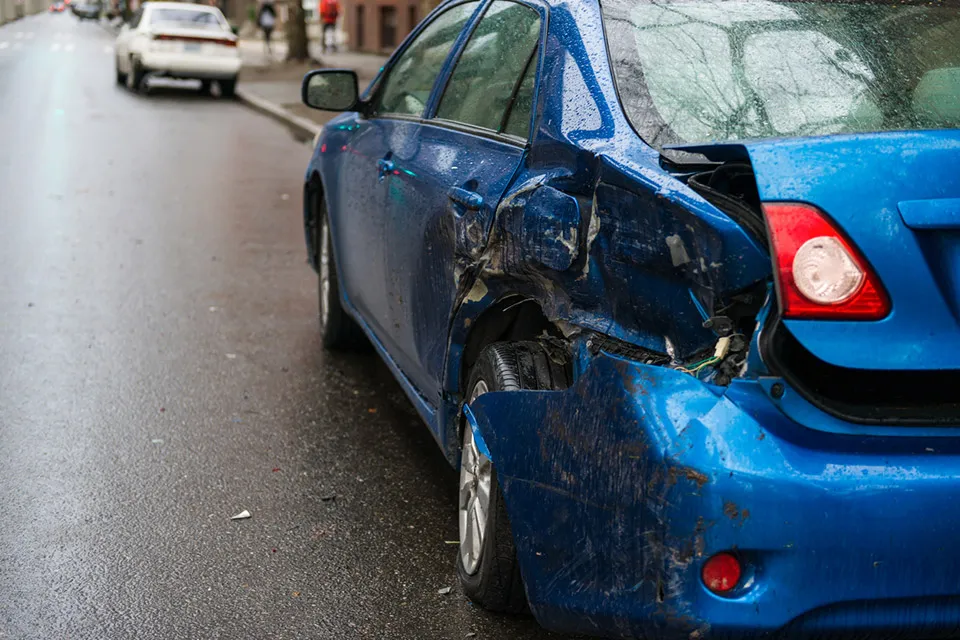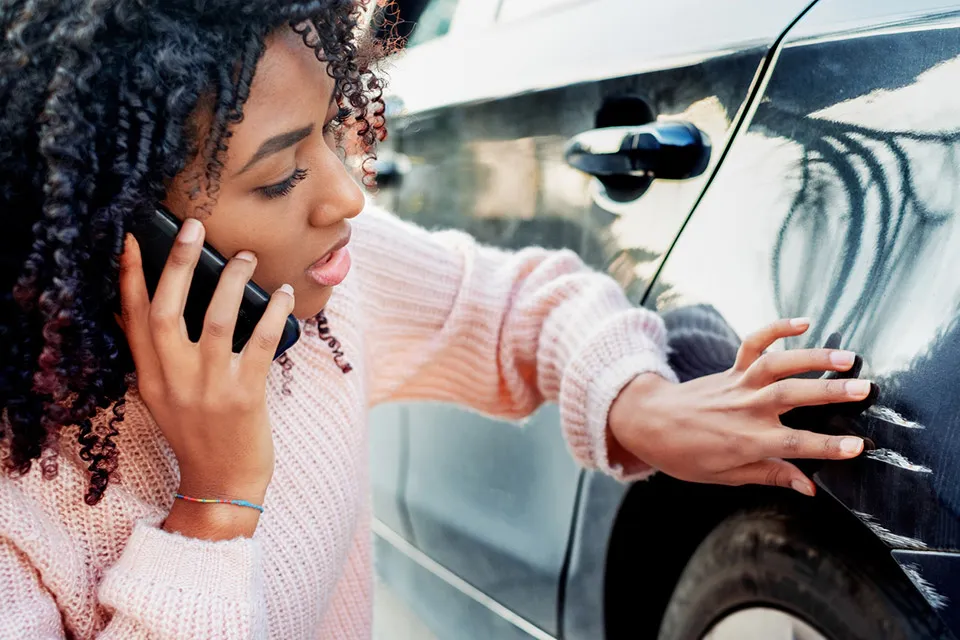Will a Hit-and-Run Claim Raise My Insurance?

According to the American Automobile Association, more than one hit-and-run crash happens every minute in the United States. A hit-and-run can be a traumatic event, not only physically but financially. Fortunately, many insurance types will cover a hit-and-run accident, especially when you aren't at fault. Whether or not your insurance will go up depends on the nature of the incident, who is at fault, and what exactly was damaged. In most cases, the driver who is not at fault will not have their insurance increased, while the at-fault driver (if found) will face significant insurance increases.
What is a Hit-and-Run?
A hit-and-run refers to an accident where a driver collides with a vehicle, person, or piece of property and leaves the scene without providing their insurance information. The regular procedure during an accident is for drivers to exchange their contact information and insurance details, as well as contact a police officer. Hit-and-run drivers want to avoid any of this, either due to outstanding warrants, a lack of insurance, or because they don't care about the consequences of their actions.
There are many consequences to committing a hit-and-run. In some states, leaving the scene when an injury has taken place is a felony. If caught, the offending driver could owe thousands or tens of thousands of dollars in fines and face incarceration. If there was no injury, the driver could still face a misdemeanor charge, resulting in fines and the possible suspension of their license.
What is a Hit-and-Run Insurance Claim?
A hit-and-run insurance claim is what a victim submits to their insurance to cover their damages and injuries in the event of a hit-and-run. What coverage will be used depends on whether the damages affected a vehicle, person, or piece of property. So does insurance cover a hit-and-run? In some cases, yes. A number of coverage types can be used to file a hit-and-run insurance claim, including:
- Personal Injury Protection (PIP)
- Medical Payments (MedPay)
- Collision
- Uninsured Motorist
- Underinsured Motorist
- Uninsured Motorist Bodily Injury (UMBI)
- Uninsured Motorist Property Damage (UMPD)
If your claim is successful, you should be reimbursed for any costs incurred due to the event, including damages to your vehicle or personal injuries.
How Does a Hit-and-Run Insurance Claim Work?

As with most claims, your insurance company will look at the facts of the cases and determine whether your incident qualifies. You may have to pay a deductible or out-of-pocket cost before your insurer covers the remaining damages. This doesn't apply to all insurance types: uninsured motorist bodily injury coverage, for example, rarely asks you to pay a deductible. On the other hand, personal injury protection will almost always ask for a deductible to be paid.
Whether you want to file a claim should depend on the extent of your vehicle damage or personal injuries. If the costs you've incurred do not exceed your deductible, it may not be worth your time to file a claim. While the increase you could face is likely to be non-existent or minimal, it may not be worth the hassle if you won't get any money from the claim.
Hit-and-Run Claim Frequently Asked Questions
Does Liability Insurance Cover Hit-and-Run?
Because liability insurance is designed to cover the other driver in an accident, it usually won't help during a hit-and-run. The only way liability insurance would help if you are hit by a driver who leaves the scene is if they are eventually found. If you are the at-fault driver, your liability insurance may cover the other driver's damage, but that's only if you come forward or get caught. In general, it's more likely that PIP, MedPay, collision, or another type of insurance policy would be used to cover a hit-and-run.
Does Full Coverage Cover Hit-and-Run?
Full coverage insurance may help during a hit-and-run, though that depends on what type of full coverage policy you have. Full coverage usually refers to having liability, comprehensive, and collision insurance; for a hit-and-run, comprehensive and collision insurance may cover some of the damages to your vehicle. You would need additional coverage types for the medical bills, like personal injury protection, medical payments insurance, or a bodily injury policy.
What Should I Do if Someone Hits My Car and Drives Off?
If you are not injured, the first thing you should do after a hit-and-run is to contact the police. You'll need to provide them with any information you have about the accident, including a description of the driver's vehicle, what they look like, where the accident occurred, and what damages were inflicted on you or your vehicle. You'll then want to call your insurance provider, even if you don't plan to make a claim yet. This establishes a record of the incident with them in the event you want to file a claim in the future.
Does a Hit-and-Run Show Up on Insurance?
A hit-and-run may appear on your insurance even if you are not at fault. Vehicles that have previously been involved in hit-and-runs may also be flagged by insurance, even if the accident occurred before you owned the car. You can check whether your vehicle has ever been in an accident with certain tools like a vehicle history report, while other tools like a VIN decoder can show you additional information like manufacturing origins. You can also call your insurance company to see whether they've found anything about your car and whether a hit-and-run may affect your monthly premiums.
How Do You Know if a Crash is Your Fault?
There are numerous ways to prove fault in an accident, though it can be difficult to focus on who is responsible after such an event. If one of the drivers is intoxicated, distracted by their phone, or unable to fully focus on the road, they are likely at fault. Where the damage occurs on a vehicle can also show who is at fault in an accident. For example, if the damage is on the back of a vehicle, that usually means that the other driver is to blame.
FREE Vehicle Search
- Accidents
- Problem Checks
- Title Records
- Recalls
- Values
- Specs
-
InfoPay, Inc. (dba GoodCar) is an Approved NMVTIS Data Provider
-
-





































